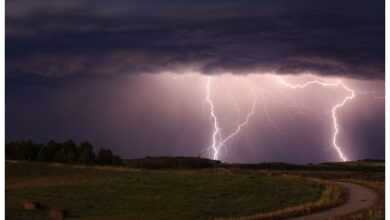Weather and Environment
World’s Longest Lightning Bolt Hit 3 US States At Once

Geneva, Feb 2 : An almost 500-mile long lightning bolt across three US states and lasted for almost nine seconds has been recorded as a new world record for longest flash, World Meteorological Organization (WMO) said. According to a statement on Tuesday, the longest single flash that covered a horizontal distance of 477.2 miles (768 km) across parts of the southern US on April 29, 2020. The bolt spread across Mississippi, Luisiana and Texas. The distance covered is equivalent to the distance between New York City and Columbus Ohio in the US or between London and Hamburg in Germany.
The previous record for the longest detected megaflash distance was stretched for 440.6 miles across parts of southern Brazil on October 31, 2018. The WMO has announced another world record — lightning flash recorded in 2020 in Uruguay and Argentina. “The greatest duration for a single lightning flash of 17.1 seconds from the flash that developed continuously through a thunderstorm over Uruguay and northern Argentina on June 18, 2020,” WMO said. Previously, the longest duration megaflash was 16.73 seconds that developed continuously over northern Argentina on March 4, 2019. “These are extraordinary records from single lightning flash events.
Environmental extremes are living measurements of the power of nature, as well as scientific progress in being able to make such assessments. It is likely that even greater extremes still exist, and that we will be able to observe them as lightning detection technology improves,” said Professor Randall Cerveny, rapporteur of Weather and Climate Extremes for WMO. According to WMO, the new record strikes occurred in hotspots for Mesoscale Convective System (MCS) thunderstorms, whose dynamics permit extraordinary megaflashes to occur – namely, the Great Plains in North America, and the La Plata basin in South America. Lightning specialist and committee member Ron Holle said, “These extremely large and long-duration lightning events were not isolated but happened during active thunderstorms.”






